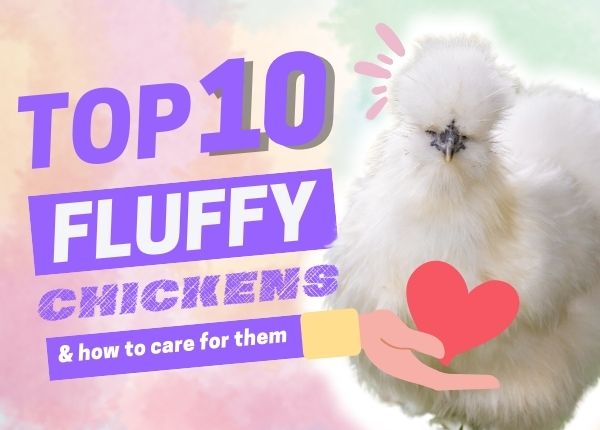
There’s nothing as adorable as a feathery flock of fluffy butts bumbling about your yard. Who doesn’t want a huggable hen?
All baby chicks are loveable little fluff bombs, but most chickens lose their fluffy down when they get their grown-up, big-chick feathers.
Some chickens, however, stay fluffy forever!
Fluffy chickens appeal to us softies in the same way that puppies and kittens do. We’re genetically programmed to find baby-like features endearing. We can’t help it. We NEED fluffy chickens.
You’ve probably already seen the seductively soft Silkie chickens, but there are lots of other fuzzy, fluffy fowl about who make brilliant backyard birds. I’m going to introduce you shortly!
Fancy some cotton-candy chickens for your coop? If you’re wondering what’s involved in keeping your very own powder-puff Polish or snuggly Silkie then you’ve cracked it landing here.
Here’s what’s coming up….
TOP 10 FLUFFY CHICKEN QUESTIONS ANSWERED
…including caring for fluffy chickens
&
THE TOP 10 FLUFFY CHICKEN BREEDS
…in order of fluffiness! Eek!
I know by the time you’ve seen these beauties you’ll be convinced that fluffy chickens are the way forward. In my humble, hen-loving opinion, they absolutely are!
Fluffy chickens aren’t any harder to care for than flat-feathered chickens, but all animals need humans who know how to care for them and meet their breed-specific needs.
The internet is bursting with information, facts, and figures about keeping chickens. But how do you know what to search for, what to watch out for, and which information to trust?
Keeping chickens will throw up a million questions, and a few bizarre-looking poops! Don’t get stuck in damage control mode reacting hastily to unexpected problems: it’s stressful, it’s daunting, it’s expensive, and it can be scary.
Chickenpedia will make your chicken-keeping journey fun, not frantic. Prepare yourself with everything you need to know about chicken breeds, chicken health, coops, predators, and even gardening with chickens!
Sneak Beak at the top 10 fluffy chickens - photos below, stay with me!
- Silkies
- Frizzles
- Cochins
- Polish
- Sultans
- Ameraucanas
- Orpingtons
- Faverolles
- Brahmas
- Marans
But first…
TOP 10 FLUFFY CHICKEN FAQs
1. What’s The Fluffiest Breed of Chicken?
There is no fluffier fowl than the Silkie. This is because of their unique feathering which you won’t find in any other breed of chicken. Technically, their feathers are faulty, but they’re also the Silkie’s best feature.
Most chickens have pennaceous feathers which keep their shape thanks to tiny barbs which interlock them into shape. Silkies are barbless birds. Their feathers can’t zip into shape meaning they look and feel like cotton wool balls with beaks, and they can’t fly.
Soft & Fluffy Scale: 0/5
Egg laying: 0/5
Temperament: 0/5
Looks: 0/5
2. Are Fluffy Chickens Hard to Care for?
In most homestead environments fluffy chickens are no harder to care for than sleek and petite poultry pets. It’s just extreme climate conditions that aren’t ideal for fluffy chickens.
Chickens with fluffy legs or feet aren’t suited to muddy yards as they’ll soon end up wearing mud socks. A little puddle here and there won’t hurt, but they might just need a little help keeping their feet clean and dry in the worst weather.
Loose-feathered breeds like Silkies will need extra protection from cold and wet conditions, and heavily feathered chickens will need shade in the summer, so they don’t overheat.
FLUFFY CHICKENS MAKE GREAT PETS.
THEY’RE NOT TOO FANCY FOR BEGINNERS!
3. Do Fluffy Chickens Need Grooming?
Fluffy chickens don’t have to be groomed. If you’re keeping fancy chickens to show, then you’ll be used to grooming your showgirls whatever their breed, but as pets or barnyard birds they won’t need regular grooming so long as they don’t get excessively wet or muddy.
Chickens have their preening routines under control. They’ll spend the bulk of their leisure time dustbathing and plumping their feathers to perfection. There’s no need to draft up a blow-dry schedule for your flock (unless of course you want to, jo judgement here). You would probably not meet their egg-sacting standards if you took a brush to them anyway.
If your Silkie gets caught in excessive rain, or your Cochin gets stuck in the mud, then they might need your help getting their standards back on track to avoid infection or frostbite.
4. Can Fluffy Chicken Get Wet?
All chickens dodge heavy rainfall, but fluffy chickens really do not do rain🌧. They have their heads screwed on enough to know that they’d rather not get cold and drenched and have to dry off again afterwards.
Some chickens will brave a light shower since they make for a peaceful pecking opportunity.
Rain brings those yummy bugs to the surface of the soil, and nasty predators aren’t out and about.
Very loose-feathered chickens like Silkies, some Polish, and frizzle breeds, don’t have water-resistant feathers so if they get soaked to the skin they can suffer from hypothermia if left too long.
5. Can Fluffy Chickens Fly?
Most fluffy chicken breeds can’t fly well. Silkies and Frizzles don’t fly at all since they don’t have the right feather structure to take flight. Science just isn’t on their side.
Less fluffy yet larger breeds like Wyandottes and Cochins are just too cuddly to fly very far. They have functioning flight feathers, but they’re bred to be heavy, so they don’t have enough oomph to force their curvaceous figures into long distance flights.
6. Do Fluffy Chickens Have Health Issues?
Fluffy chickens don’t have any specific health issues directly relevant to their feathering, but they are more prone to certain health issues if they aren’t cared for properly…which of course, they will be!
Here are five fluffy-chicken health issues to watch out for:
- Hypothermia
Loose-feathered breeds feel the cold more since they’re not as well insulated. They prefer warm climates to cold climates, and if you keep loose feathered chickens, you’ll need to make sure they always have access to a warm, dry place to avoid bad weather.
“Frizzled chickens have less insulative protection from hot, cold, and wet weather than chickens with smooth feathers. On the other hand, frizzled plumage helps heat dissipate more rapidly, making Frizzles better adapted to arid tropics. Since Frizzles can’t fly, they should be provided with low roosting bars.” (Cackle Hatchery)
- Mites and Ticks
There’s no evidence to say that fluffy chicken breeds are more prone to mites and ticks than flat-feathered breeds, but more feathers do mean more places for nasties to hide. You might need to look deeper and more regularly to spot those little cretins early enough to act.
- Scaly Leg Mite
Scaly Leg Mite is a parasite that is quite common amongst Silkies. It might be due to those feathery legs making them a more attractive target than a clean-legged chicken.
“Scaly leg mite irritates the birds’ legs by burrowing under the scales which causes crusty deposits and thickening and loosening of the scales. Do not be tempted to pull off any scales – this will be very painful and is more likely to release more mites into the environment, increasing the risk of the condition spreading.” (Millhouse vets)
- Frost Bite
Frostbite can bite any chicken in the butt, but fluffy breeds are more at risk since it takes them longer to dry off when they do get wet. Feathery feet retain moisture from the ground and make chickens more likely to get cold feet.
- Foot Infections
Fluffy footwear isn’t great in mud! Breeds like Cochins need to keep their feet relatively clean, and muddy coops are a recipe for mud ball boots. Mud will need to be bathed off and feet dried to avoid infection.

7. What’s a Frizzle Chicken?

A frizzle is not a breed of chicken, it’s a variety of feathering that’s found in multiple breeds. The most commonly frizzled breeds include Polish bantams, Cochin bantams, Plymouth Rock bantams, and Silkies. If you have a Silkie frizzle, then you have a sizzle!
When a frizzle and a smooth-feathered bird are bred together, there’s a 50:50 chance of getting another frizzle. You should never be tempted to breed two frizzles though…
8. What’s A Frazzle Chicken?
A frazzle is a potential result of breeding two frizzled chickens. When two frizzles reproduce 25% of their babies are born as frazzles. They’re sometimes called extreme frizzles or curlies.
It might be tempting to keep the frizzle going in your flock, but frazzles have a lot of health problems, so it’s not a kind thing to do. Super frizzled feathers are so weak that they snap from the slightest contact.
9. How Much Do Fluffy Chickens Cost?
Most fluffy chicken breeds can be picked up from reputable hatcheries from 5-15 USD.
Just as there are lots of fluffy chickens available, there are lots of fluffy-chicken price tags, too. If you wanted to buy a show-worthy strain of Silkie or Cochin, you might pay up to 100 USD.
The price of a chicken largely depends on the age. Day olds will be much lower in price compared to hand-raised, sexed, vaccinated 3-month-old hens, which will fetch a much high price tag, understandably.
10. What are The Pros & Cons of Fluffy Chickens

Pros:
- Attractive looking
- Unique and unusual
- Great for showing
- Tend to be friendly
- Poor fliers, so easier to contain
- Decent egg layers
- Beginner, kid and pet friendly!
Cons:
- Not great at evading predators
- Can’t handle wet or muddy conditions
- May not be cold-hardy or heat-hardy, depending on the breed
- Can be prone to frostbite & mites
- May be pecked at by other breeds
- Usually yield less eggs
TOP TEN FLUFFY CHICKEN CHOICES
Fluffiness is subjective. Nobody would argue that the Silkie is a fluffy chicken, but does the Brahma’s fluffy butt top the Polish top knot? Hmmmm.
There are lots of chicken breeds and varieties that are fluffy, or ‘fluffyish’ to take your pick from. Not all of them are right for backyard keepers, pets, or even barnyard birds so please don’t pick a chick based entirely on her clucks.
I’ve lined up the top 10 fluffy chickens for backyards and pets in order of fluffiness! These are the 10 most snuggly-looking clucks which also make good backyard breeds.

SILKIES
Soft & Fluffy Scale: 5/5
Egg laying: 2/5
Temperament: 5/5
Overall looks: 5/5
Of course, we’re starting with the Silkie. They’re the fluffiest fowl in town!
Silkies are true bantams. They average 8-14 inches tall and 27.6 inches in length. They're round and short little chickens.
There are ten commonly acknowledged colors of Silkie to take your chicken pick from and they’re all as beautiful on the inside as they are on the outside.
Other than the fact they are so darn cuddly, their personalities are one of the reasons we love them so much. They’re friendly, sociable, affectionate, and award-winning mommas. They’re small and quiet meaning they’re perfect for backyard and suburban areas.
Silkies are also one of the rare black skinned chicken breeds. The rare melanism in Silkie's connective tissues is caused by fibromelanosis: a mutation believed to come from Asia.
Silkies also have an extra toe and unique turquoise earlobes. They're little bundles of specialness.
Silkies are classed as poor egg layers and lay 2-3 small eggs each week, but some are known to lay up to 5, so it will depend on your hen, and how well she’s cared for. If you need a dozen eggs a week, you will probably need around 4 Silkies to be safe. The more the merrier I say!
Tell Me More About These Silkies!
FRIZZLES
Soft & Fluffy Scale: 4/5
Egg laying: 3/5
Temperament: 4/5
Overall looks: 5/5
Frizzle chickens are next up on the fluffiness scale! Since frizzles aren’t a breed of chicken, but a feathering variety seen in a range of chicken breeds, they’re hard to sum up in a sentence.
Frizzles are bred by breeding one frizzled chicken with another smooth-feathered chicken of any breed. Some breeds frizzle more easily than others and the most successful and popular frizzles include Cochins, Polish Chickens, Japanese Bantams, and Barred Rocks.
The physique, appearance, laying ability, and temperament of frizzled chickens mirror those of their breed. One thing’s for sure though, frizzles are ALWAYS fluffy!😍
Frizzles are best suited to warm conditions since their fluffy feathers don’t offer the best insulation.
I covered frazzles earlier, but I must mention sizzles! Sizzles are the offspring of a frizzled rooster and a Silkie hen. They’re sometimes called frizzled Silkies, or Frilkies. Sizzles have the same fluffy feathers as their Silkie mommas, except they’re curly like their poultry pappy.
COCHINS
Soft & Fluffy Scale: 4/5
Egg laying: 3/5
Temperament: 4/5
Overall looks: 5/5
Cochins are huge, soft, huggable bundles of feathers. Cochins have standard (satin) feathers, but a lot of them, and they’re very loosely feathered meaning they look like a giant mass of fluff.
Cochins are feathered from beak to bottom and top to toe. Their legs and toes are completely feathered, so from the side, you can’t see any of their legs or toes at all.
Cochins are one of the largest chicken breeds about, weighing 8.5lbs on average. Add a fluff-attack feathery jacket to that and they look twice the size.
Just like Silkies, Cochins are consistent regular egg layers at 150 – 180 eggs a year. They make up for their average egg stats by being super-cuddly, super-friendly, and super sweet. They will happily spend their time on your lap being snuggled, so when they don’t deliver the goods, you can’t stay mad at them for long.
Fancy a mini poof ball? Cochin bantams are easy to get hold of from larger hatcheries. Perhaps you want a super-charged fluffy chicken? Cochin Frizzles…BOOM! Fluff bombs!
POLISH CHICKENS
Soft & Fluffy Scale: 4/5
Egg laying: 4/5
Temperament: 4/5
Overall looks: 5/5
Polish chickens don’t have the fluffiest bodies – in fact, they’re beautifully slim - but just look at those punky poultry hairstyles!
Polish chickens are unique looking. You can’t argue with that! Roosters have squared, messy mohawks whilst hens wear their hair in a full-bodied, lady-like bob.
Polish chickens are medium-sized birds and stand at 12-15 inches in height: they're a tall and slim breed with hens weighing 4.5 lbs and roosters weighing 6lbs, on average.
Polish chickens offer a pick 'n' mix of pompom poultry. You can find all sorts of color varieties, frizzles, and teeny bantams which weigh a dainty 1.6 – 1.8 lbs. They are the cutest little tottering pom poms!
Polish hens lay 150 medium-sized bright white eggs a year. Whilst their productivity isn’t that impressive, they’re ornamental birds, and looking awesome is what they do best. Their eggs are a bonus.
Polish chickens make the perfect punky pets. They're loving, affectionate, entertaining, inquisitive, and playful. They aren’t the perfect hatch match for small kids though, since their crazy crests mean that they can't see very well and are easily shocked into a feathered frenzy.
Tell Me More About Polish Chickens
SULTANS
Soft & Fluffy Scale: 3/5
Egg laying: 2/5
Temperament: 3/5
Overall looks: 3/5
Next up, rocking another impressive hairdo, we have the Sultan chicken!
Sultans originate from Turkey, and they are bred for one thing and one thing only…looking FLUFFY!
Like Silkies, Sultan chickens are odd in every way. They have frothy crests on their head, muffs, a beard, an extra toe, and very feathery feet. They also have a unique v-shaped comb, but good cluck seeing that through that fierce-looking fro!
Sultan chickens are the smallest of the standard-sized chicken breeds, with hens weighing 6 lbs and roosters weighing 8lbs on average. You can get bantams too, which are mega-cute little Sultan snowballs!
Sultans are friendly, calm, agreeable chickens and make great poultry pets.
They won’t win any awards laying just 50 eggs a year, and they’re not the best sitters so you can’t breed them easily, but they are great at being fluffy, and that’s what we’re here for!
AMERAUCANAS
Soft & Fluffy Scale: 3/5
Egg laying: 4/5
Temperament: 4/5
Overall looks: 3/5
The Ameraucanas’ fluffiest features are its chipmunk-like beard and muffs. They’re America's solution to the Araucana, keeping the ability to lay beautiful blue eggs, but shaking off the dodgy gene that causes high mortality rates.
Ameraucanas lay 150 – 200 eggs a year. 70% of Ameraucana owners that we interviewed said they enjoy six scruptious eggs a week, and 15% said they were clucky enough to egg-spect seven of these blue-shelled beauties!
If you’re looking for a lap pet then the Ameraucana might not be quite right. Some soppy souls exist amongst the breed, but generally, they’re a tad too skittish and timid to enjoy a full-blown public display of affection.
They’re also not the best bird to breed unless you’re happy to commit to an incubator.
Overall Ameraucanas are brilliant blue egg layers, friendly, docile, and hardy. They’re a great beginners’ choice.
Tell Me More About Ameraucana Chickens!
ORPINGTONS
Soft & Fluffy Scale: 4/5
Egg laying: 4/5
Temperament: 4/5
Overall looks: 5/5
Orpingtons are large, sturdy chickens with dense coats of soft, loose-knit feathers. The combined effect is a huge, cuddly ground cloud of a chicken! They look like feathery tumbleweeds rolling across the yard.
Orpingtons weigh 8 – 10lbs and have broad bodies with a low stance. They’re steady, calm, docile, and mellow-mannered chickens.
Buff Orpingtons are the most popular color variety, though they also come in white, brown, and blue. The buff-colored birds seem to be the friendliest, but nobody knows why.
Orpington bantams are becoming increasingly popular since they have all the plus points of a full-sized Orpington but take up less space at just 34 – 38 ounces.
As well as being fluffy, gorgeous, and friendly, Orpingtons are brilliant layers! Hens lay 200-280 large brown eggs a year. Why wouldn’t you want one?!
FAVEROLLES
Soft & Fluffy Scale: 4/5
Egg laying: 4/5
Temperament: 4/5
Overall looks: 5/5
Faverolle chickens are big softies. They are fluffy all over and will happily invite you to snuggle in and take full advantage of their squishiness.
Faverolles have very fluffy necks, beards, and muffs They look like their little heads are peering out over a woolly scarf, which explains why they’re so cold hardy.
Faverolles have a bit of a look of an Ameraucana but come with a distinctive salmon coloring. They have feathered legs and feet, and also have a fifth toe.
“The Salmon Faverolle was originally bred as utility poultry breed in France for winter eggs. Today the breed is rare and raised mostly for exhibition and novelty.” (McMurray Hatchery)
Faverolles are great, cold-hardy birds. They lay 150 – 200 cream-colored eggs and actually prefer to lay in the winter months. They’ll happily pick up the slack for you when your summer gals are taking a break.
BRAHMAS
Soft & Fluffy Scale: 4/5
Egg laying: 3/5
Temperament: 5/5
Overall looks: 5/5
The Brahma certainly stands out in a crowded coop! Next to the Jersey Giant, they are the second largest chicken breed standing at 18 inches high and weighing a whopping 8 – 10lbs. That’s more than double the size of the average backyard breed.
Brahmas have lots of loose feathering and feathery feet. They really are huge and are more than foreboding enough to frighten off the neighbour's cat.
Brahmas need a lot of space, but other than that they’re easy to care for and make adorable pets. They’re big softies and have calm, docile, friendly personalities. Brahmas are so nice-natured that they’ll happily let children nuzzle in for a cuddle.
Hens lay 100 - 150 eggs a year, so not that many, but they are large eggs.
Brahmas are impressive, imposing, gorgeous, and yet totally suitable for beginners.
Want to know more about big, fluffy Brahmas?
MARANS
Soft & Fluffy Scale: 3/5
Egg laying: 3/5
Temperament: 4/5
Overall looks: 4/5
Marans chickens are famous for their chocolatey-brown eggs. They even have their own egg-colour chart. They’re also very FLUFFY!
Marans are large, well-built birds that weigh 6.5 - 8 lbs and are 20-22 inches tall. If that’s a bit big for your backyard, then you can find fluffy little Marans bantams which weigh just 24 – 28 ounces. Cute!
Each Marans hen will lay 150 – 200 eggs a year for you, and the excitement of harvesting the darkest brown egg never gets old!
Marans chickens are great for beginners. They're hardy birds, happy foraging for their own food, they mix well, they're not flighty or awkward, and they've got lovely manners.
Want to Know More About Marans? Cluck Here!
Well I don’t know about the chickens, but my feathers are certainly ruffled. Picking the top 10 fluffy chickens felt like picking a favorite child!
Here are just a few runners-up that deserve an honorary mention. Actually, four…or maybe five! Either I’m too soft or they are because this is hard!
Russian Orloff Chicken

A handsome looking, impressive, yet endangered breeds. Could I egg you on to consider keeping some? They’re tall, large, cold-hardy chickens thanks to their feathery heads and necks. They’re not the friendliest, but they are calm, low maintenance, and can handle themselves free ranging.
Yokohama
Check out their majestically fluffy tails! Yokohamas are a truly stunning German breed but are best placed for showing as they demand a lot of space and can be rather sassy and over confident.
Chantecler
Chantecler chickens are not the most productive breed, but if a fluffy chook is what you’re after then maybe you can help improve the numbers of these gorgeous girlies. They’re in danger of becoming extinct.
Wyandotte
Wyandottes aren’t as fluffy as similar Orpingtons, but they’re still fluffy chickens! They’ll lay at least 4 medium-large eggs🥚 a week for you, with lots of owners saying their ladies deliver almost every day! Wyandotte chickens are available in a rainbow of gorgeous colors and as bantams. They’re funny, friendly, loveable, productive, and pet material.
Easter Eggers
Easter Eggers, like frizzles, are not a breed of chicken. It’s a catchall term given to mixed-breed chickens that have been crossed at some point with fluffy Araucanas or fluffy Ameraucanas. They’re generally still as soft as their ancestors and they are excellent layers in in the most wonderful array of blues and greens! It’s like Easter every morning in the nesting boxes.
WHICH BREED WOULD YOU VOTE FOR AS TOP OF THE FLUFFS?
Share your poufy poultry pics with us here!
There are so many fluffy chickens out there that it can be hard to decide which puffball to plump for. You shouldn’t stop researching now…
Picking the perfect chicken - fluffy or not - is an important decision! Do you know how long chickens live for? You’ll be spending a long time with your backyard buddies so don’t leap in without learning their ways first. Check out Chickenpedia’s chicken breed course before you hit the hatcheries.
Chickenpedia’s chickentastic suite of courses will have you flying through chicken healthcare, coop designs, chicken nutrition, and even predator management so that you’re tooled up and ready to rock life raising chickens. I recommend them to all of my readers because it is better to be proactive and prepared than stuck in reactive mode with a sick chicken.


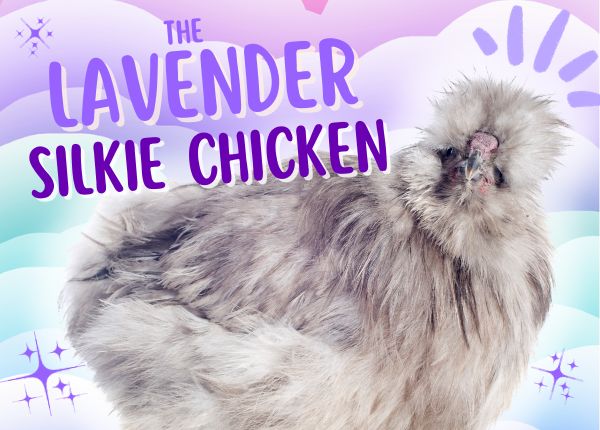
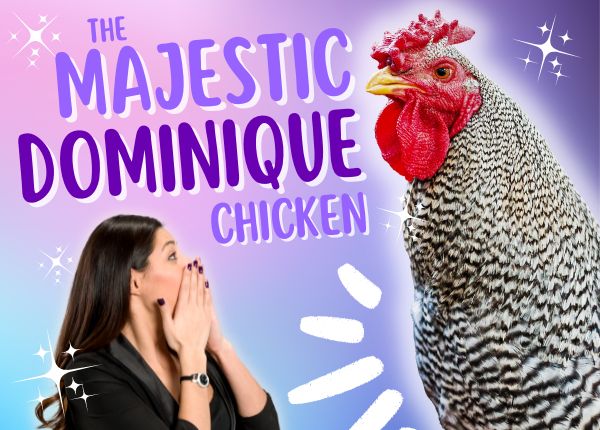

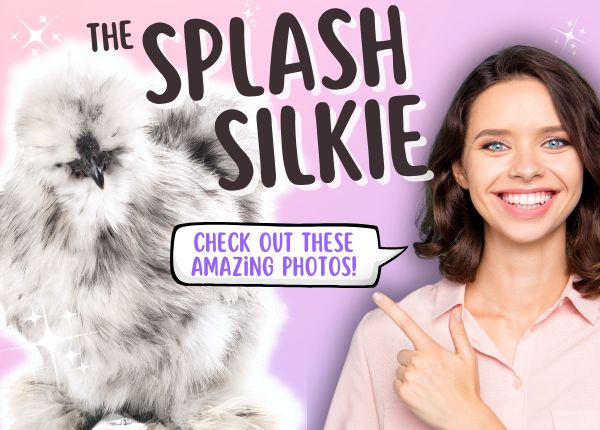

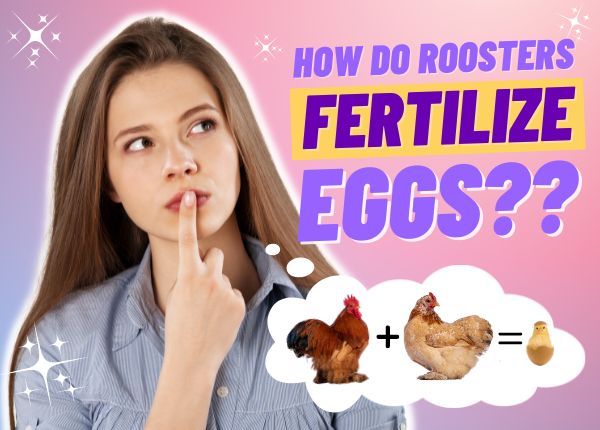



Leave a comment (all fields required)